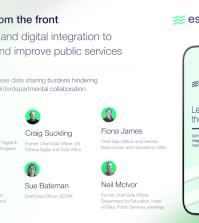Government of Canada launches updated digital strategy

The Government of Canada (GC) has launched the latest iteration of its digital strategy, which includes a continued effort to introduce secure digital identities for citizens.
In the foreword to the Digital Operations Strategic Plan (DOSP) 2021–2024, which was released last week, chief information officer Marc Brouillard said that the COVID-19 pandemic has “significantly accelerated the global shift to online services” and praised civil servants’ efforts.
However, Brouillard said, the GC needs to go even further to make digital services as seamless as possible. Alongside creating a single digital identity for citizens, other plans include Shared Services Canada (SSC) working to consolidate departments’ networks with a wholesale shift to “cloud-first networks”.
“To make digital government a reality in an unpredictable environment, we in the GC must modernise how we manage technology and technological change to keep government responsive and resilient so that it meets the changing needs and expectations of Canadians and Canadian businesses,” he said.
“Since the 2018–2022 DOSP, we have introduced important changes to our digital governance, policy suite and management practices to set the foundation for a digital government across all ministries. We are on track to launch the OneGC platform, which will allow individuals and businesses to use a single identity and password to access federal government services through a single window on Canada.ca,” he noted.
Current priorities
Brouillard said that current priorities include “making investments so that the GC has easy‑to‑use, reliable, modern and secure IT systems, networks and infrastructure that support whole‑of‑government operations”.
He added that “developing and delivering services that, by design, put users first by being accessible, inclusive, secure and easy to use, and that respect privacy and choice of official language” will also take precedence, as will “improving data-driven decision‑making”.
The senior civil servant also emphasised the value of employees. “We need to attract and retain top‑notch talent,” he said.
“We will make sure that our multidisciplinary workforce has the right digital skills, that these skills are put to use in the right place and that employees have modern tools and are supported by enabling leadership. We will also continue to strive to make our workforce inclusive and diverse,” he added.
Canada’s four strategic priorities
The 2021–2024 DOSP sets the strategic direction for the government’s digital ambitions across services, information, data, IT and cybersecurity. It also sets out GC’s priorities and the actions needed to achieve them.
The latest DOSP consolidates the six strategic themes contained in the previous iteration of the strategy into four pillars.
The first focuses on legacy IT and aims to ensure that the GC’s “major service‑delivery systems are easy to use and maintain, stable and reliable, secure, and adaptable”. This includes retiring out old systems and deploying more modern infrastructure with a “cloud-first” approach.
As part of the pillar, networks will be upgraded and consolidated. “Currently, the GC has 50 networks across the country. Many of them are old and cannot handle cloud, video and voice,” the strategy notes. “SSC will replace single departmental networks with modern, consolidated, cloud‑first networks that are available anytime, anywhere and to anyone who needs them,” it notes.
The second pillar aims to improve services and make sure “individuals and businesses are satisfied with and trust GC services, which are reliable, secure, timely, accessible and easy to use from any device”.
Digital identity, which carries over from the previous strategy, sits under this strand. The Treasury Board of Canada Secretariat and SSC are building on the existing digital authentication system, Sign-In Canada, the document notes. “The goal is to enable the service to accept trusted digital identities from provincial and territorial governments in addition to credentials provided by the private sector,” it says.
The third pillar – “implement enterprise” – focuses on officials. It is designed to make sure that “GC public servants are happier and more productive; departments make better data-driven decisions; operations are more effective and efficient; costs are lower; and duplication of effort is reduced.”
Finally, the “transform the institution” pillar should ensure “GC public servants are digitally enabled through cultural and operational shifts and work on modern, diverse and multidisciplinary teams to serve the public better”.





















